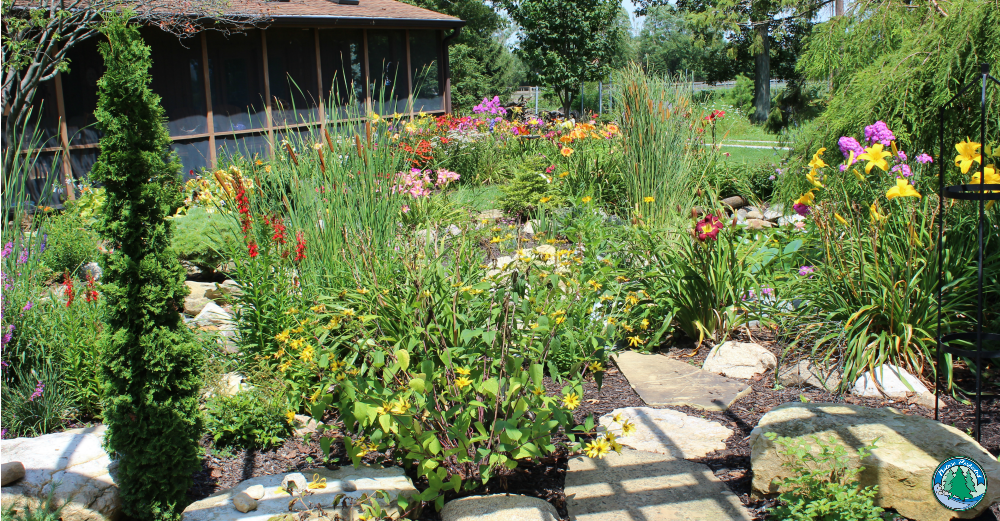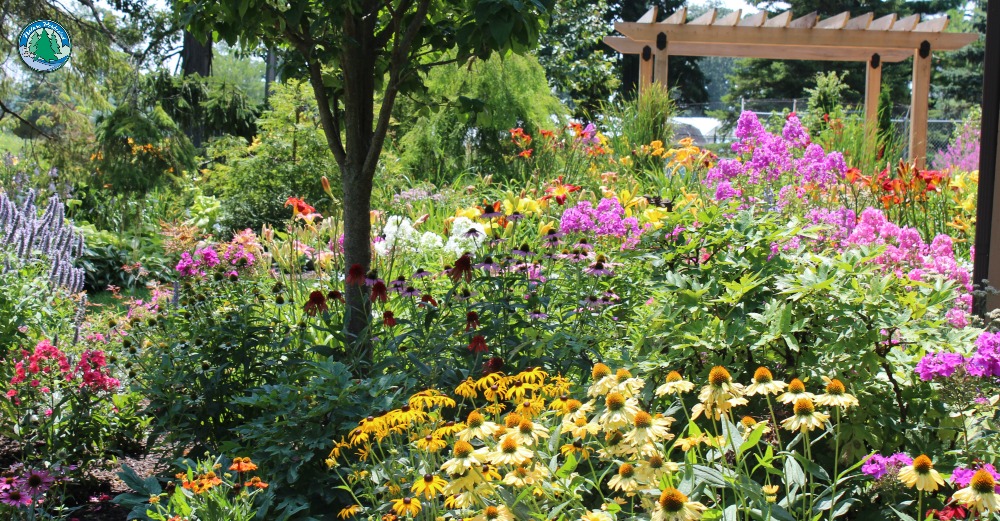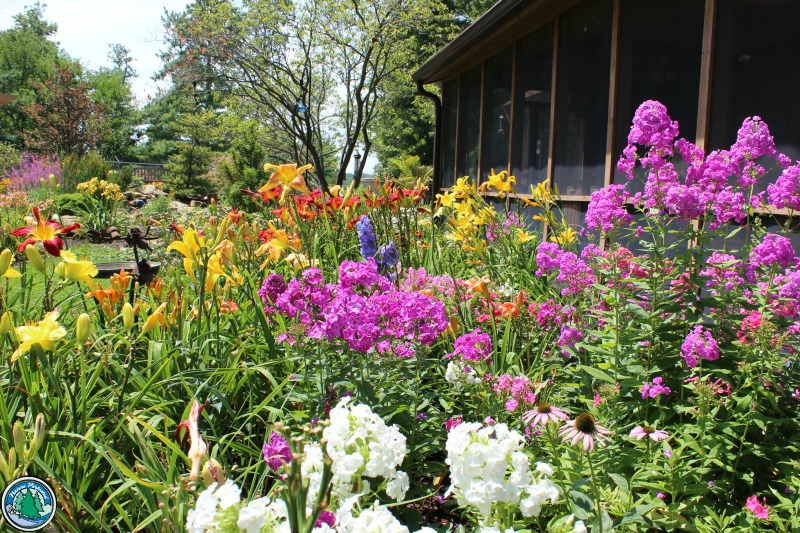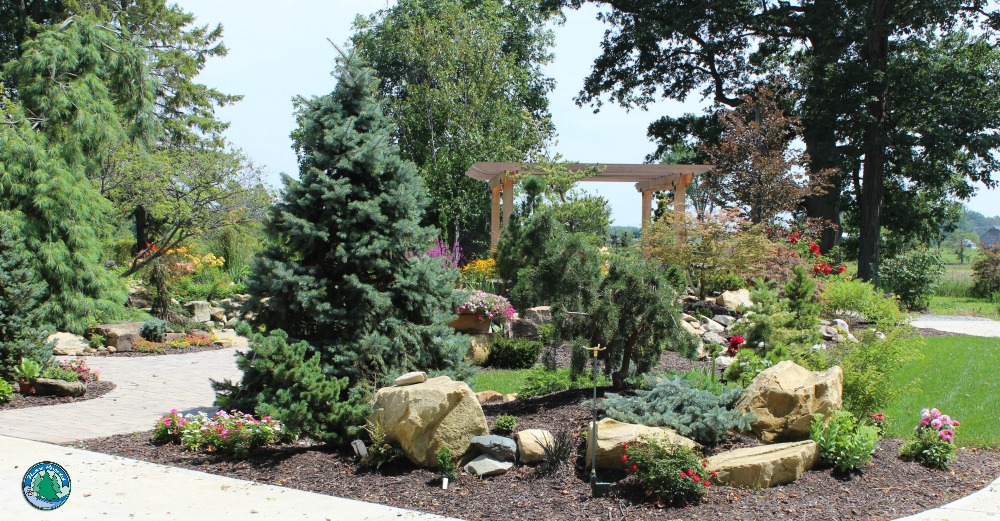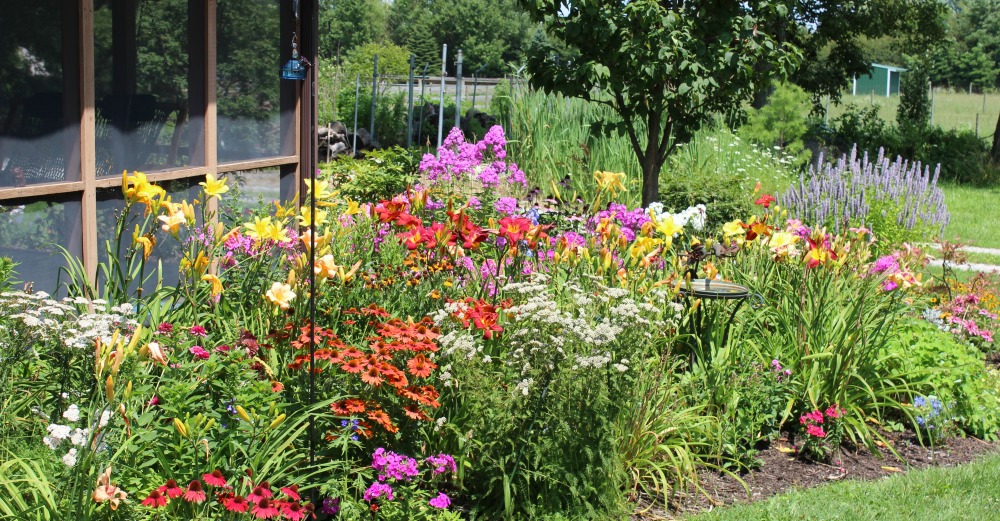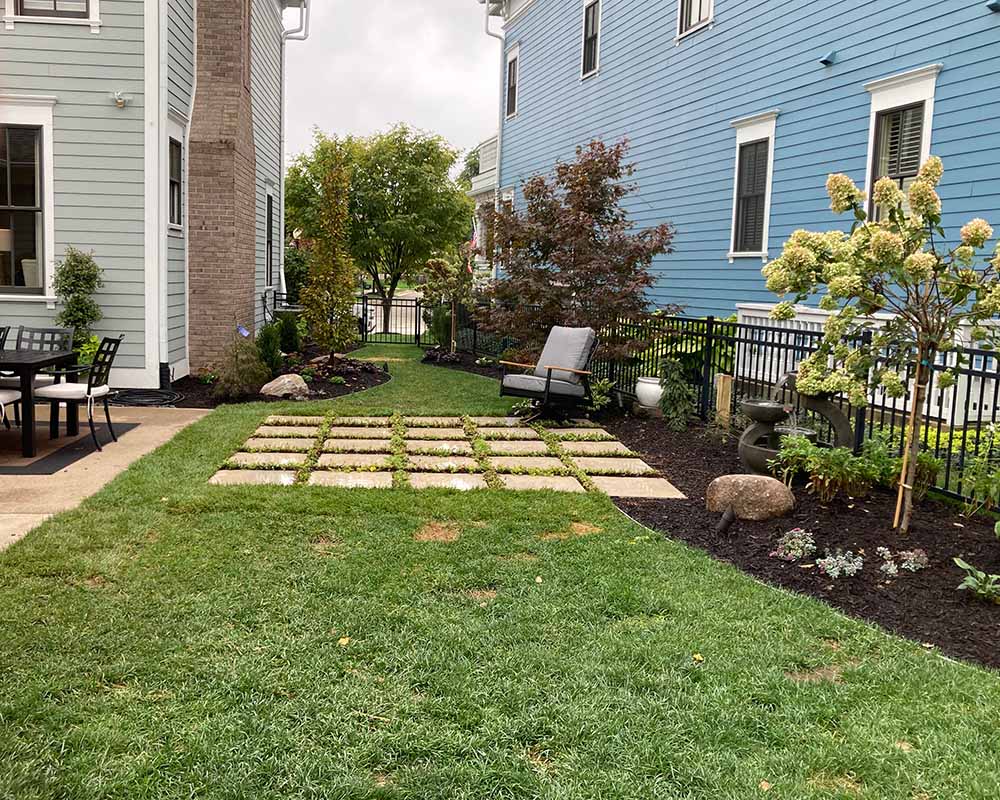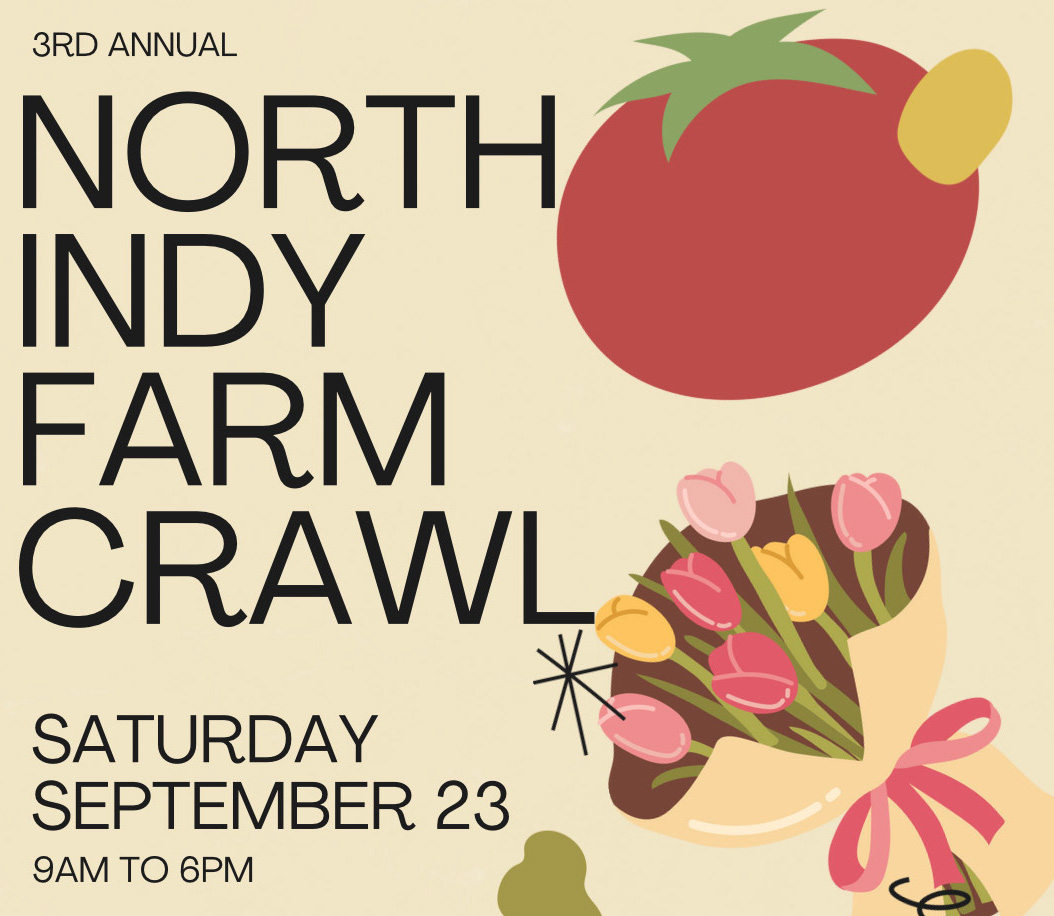In the plant world, perennials and annuals are named aptly – the former being those species that come back every year and the latter lasting only one season. A summer perennial garden plan is usually created with the goal of providing visual interest and color all season long, year after year. There are multiple ways to achieve this goal, from mass plantings of just a few varieties, to mixing all kinds of flowers together. We do not advocate one approach over another, however, we do have some general tips on how to create a summer perennial garden plan.
Planning Makes Beautiful
Placing a bunch of different plants together and seeing what happens is not the best way to approach your perennial garden. Unless you are trying to make a wildflower field, taking a bit of time to plan the look you want to achieve will lead to a better outcome. We suggest that you use 3-5 of the same type of plant together rather than sprinkling one-offs throughout the space. This design offers more impact, allows the plants to be seen from afar (like the road or the porch), and makes the garden look like a series of bold decisions rather than a smattering of options.
Variety is the Spice of Life
Look for different heights of plants, 1ft tall, 3 feet tall, and everything in between, and layer them to allow the unique aspect of each variety to shine. You will add incredible visual interest, particularly if you look for not just beautiful flowers, but different textures and shapes. Usually, the taller varieties should be planted toward the back, but that is not a hard and fast rule. The goal is to place the plants in a way that showcases each one when it reaches maturity.
Plan for Growth
Speaking of maturity, it is important to remember that you are planting perennials, which means they will come back and grow larger each year. When planning your garden, think about what you want it to look like in 3-5 years, not today. You must give each plant enough room to expand its presence in your landscape without choking other varieties out. Your plants should not all be touching the first year you plant them. Also, some varieties spread more than others. For example, Black eyed Susan is profuse self-seeder so you could end up with a big swath of them in just a few years time. Avid gardeners welcome the opportunity to keep these beauties in check, but if you want to plant and go, they are not the right variety for you. Understand the propagation of your plants by reading the tags or searching Google.
Color Your World
Either choose a complementary color palette or embrace the clashing that comes with haphazard mixing. For example, plant pinks, whites, lavenders and blues together (cool color palette) or reds, yellows, and oranges together (warm color palette). You can go for the full breadth of the color spectrum but you will be creating that wildflower garden we mentioned before rather than a more refined or formal landscape. In the end, it’s up to your personal taste.
The Circle Of Life
Part of the annual lifecycle of a summer perennial is that they die in the fall, you cut them back, and your landscape is empty until late spring. Therefore, we suggest that you add other plant species to your yard to avoid the barren wasteland look in the late fall, winter and early spring. Evergreen varieties like boxwood, yews, globe spruce and dwarf pines work well here in Indiana to keep your landscape looking interesting in every season.
The Annual Approach
Many gardeners like to mix annual varieties into their perennial gardens. We suggest you follow the same tips we mentioned above, just on an annual basis. Annuals tend to be shorter and die quickly, so it is best to keep them at the front of your beds to showcase them while they last. Adding annuals allows you to evolve your landscape over the growing season. It’s also fun to change the look year to year, experimenting with different varieties.
Embrace the Ugly
We have clients come to us for ideas on how to hide that ugly utility box in their yard. Our advice? Get over it. Everyone has one, everyone sees them and they look like part of your house. Adding plantings around it just draws the eye to it rather than letting it stay a ubiquitous, ignorable part of the landscape. If you really need to plant, create something beautiful so people note the flowers instead of a wall of tall grasses.
All of the images in this blog post are from our own summer perennial garden, so you can see how we love to play with these plants. Let us help you with your landscape. Send us an email or give us a call at (317) 997-4803.

